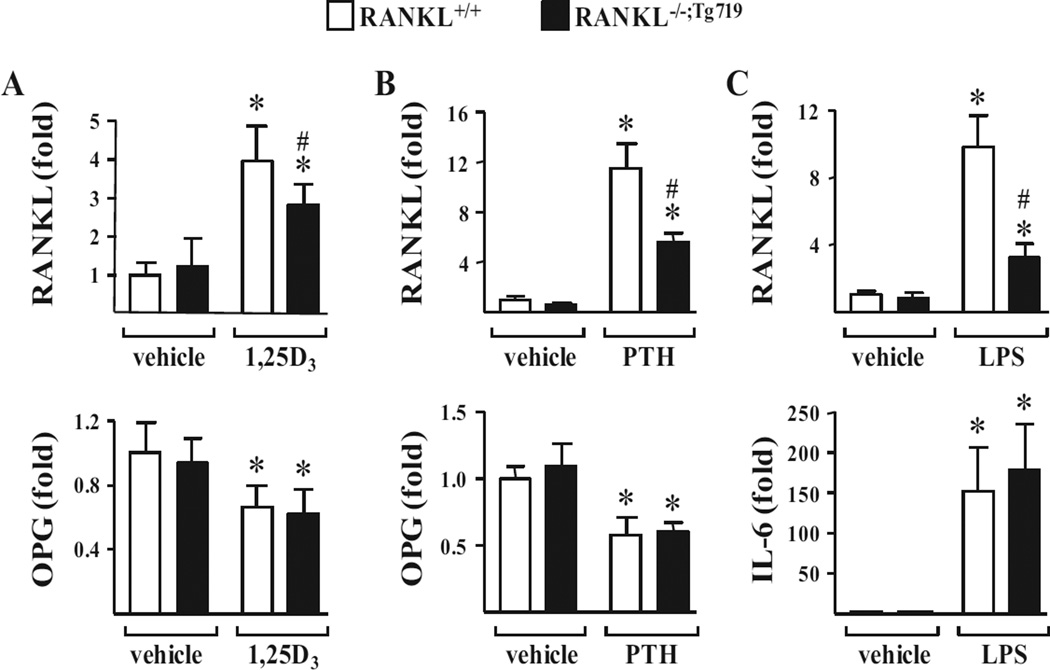Fig. 7.
mTnfsf11 transgene expression is inducible with 1,25(OH)2D3, PTH, and LPS. All animals used in the following experiments were littermates. (A) Seven-week-old to 8-week-old female RANKL+/+ or RANKL−/−;Tg719 mice were injected i.p. with 1,25(OH)2D3 (1,25D3) (10 ng/g of bw in propylene glycol) or vehicle (propylene glycol). The animals were euthanized and the tissues were collected 6 hours after injection. RANKL and OPG mRNA expression in the L5 was measured via quantitative RT-PCR (n = 4 to 6 mice/group). (B) Eight-week-old male RANKL+/+ or RANKL−/−;Tg719 mice were injected with PTH (1–84) (230 ng/g bw in PBS) or vehicle (PBS) and the same tissues as in A collected 1 hour after injection. RANKL and OPG mRNA expression in L5 was measured via quantitative RT-PCR (n = 4 mice/group). (C) Five-week-old female RANKL+/+ or RANKL−/−;Tg719 mice were injected with LPS (10 µg/g bw in PBS) or vehicle (PBS) and tissues were collected 6 hours after injection. RANKL and IL-6 mRNA expression in L5 was measured via quantitative RT-PCR (n = 4 to 5 mice/group). All values indicated represent the mean ± SD and statistical comparisons were accomplished using two-way ANOVA. * p <0.05 effect of treatment within the same genotype, #p <0.05 effect of genotype within the same treatment. bw = body weight; OPG = osteoprotegerin; IL-6 = interleukin-6; L5 = lumbar vertebra 5; LPS = lipopolysaccharide; PTH = parathyroid hormone.

